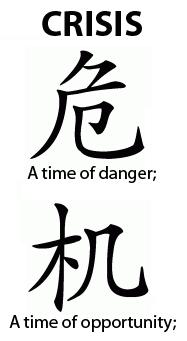The Marc Jacobs 2010 fashion show was a hit with both press and fans. The live-streaming gave fashionistas an inside look and the fun styles were a favorite among critics and buyers. In this video I share my reaction to the show and some footage so that you can make a decision for yourself. Did Marc Jacobs live up to his stellar reputation?
Wednesday, April 28, 2010
Wednesday, April 21, 2010
Diversification. Can it Result in a Crisis?
Developing ways to set yourself apart from competitors is a vital part of any industry. In the cut throat fashion industry, it is a must. Designers are constantly creating new lines that are unique and trendy, but recently, some designers have been branching out to completely new product lines. Can these new attempts at diversification be pushed too far? And what does that mean for the company?
It seems that Fashion mogul Marc Jacobs is slowing monopolizing New York City's West Village owning 5 clothing stores in the Bleecker Street are, and now he is looking to expand his hold with the opening of a book store.
New York magazine recently reported that Biography Book Shop on Bleecker Street now has a sign on the window saying, "A bookstore will be opening here Winter 2010."And the magazine claims that the book store will belong to designer Marc Jacobs. It is rumored to have the clever name "Book Marc" and to be the fashion icons 6th store in the area.

While this may seem a strange endeavor for a fashion designer, it is not the first time Jacobs has stepped out of the box. His latest store in Milan featured a full service cafe.
So this poses the question, does a book store stray too far from the company's image, and could it potentially cause a crisis for the company down the road?
Looking into the success of Marc Jacobs stores, I am compelled to answer no. Based on the popularity of this American designer, it seems that everything he touches turns to gold. It seems that people are drawn to anything with the Marc Jacobs name. It is my belief that if a cafe in Milan can succeed, so can a book store in New York.
It seems that Fashion mogul Marc Jacobs is slowing monopolizing New York City's West Village owning 5 clothing stores in the Bleecker Street are, and now he is looking to expand his hold with the opening of a book store.
New York magazine recently reported that Biography Book Shop on Bleecker Street now has a sign on the window saying, "A bookstore will be opening here Winter 2010."And the magazine claims that the book store will belong to designer Marc Jacobs. It is rumored to have the clever name "Book Marc" and to be the fashion icons 6th store in the area.

While this may seem a strange endeavor for a fashion designer, it is not the first time Jacobs has stepped out of the box. His latest store in Milan featured a full service cafe.
So this poses the question, does a book store stray too far from the company's image, and could it potentially cause a crisis for the company down the road?
Looking into the success of Marc Jacobs stores, I am compelled to answer no. Based on the popularity of this American designer, it seems that everything he touches turns to gold. It seems that people are drawn to anything with the Marc Jacobs name. It is my belief that if a cafe in Milan can succeed, so can a book store in New York.
Wednesday, April 14, 2010
Technology: An Emerging Trend In Crisis Management
Throughout this blog, I have discussed several actual and potential crises that plague corporations. However, it is important to realize that the way a crisis was handled in the past, may not be as effective today. Current trends in society, technology, and the marketplace can have an impact on how a company should manage crises. In this post, I will focus on how changes in technology have created new trends companies adhere to when communicating with their public throughout the crisis.
Internally, the increasing trend of reliance on technology has impacted how companies send messages to their target public. Because so many people have access to the Internet, a company's website is now one of the most important medias used to reach consumers. Looking into the website for Marc Jacobs, the only form of communication currently available on the page is a "contact" link to the email addresses of various employees.
I feel that this is not a very proactive design for the company. If a crisis were to occur, people would undoubtedly go to their page for information, and the only information they receive is how to e-mail titled employees. If the website had a information section, that would be a more productive way to disseminate information in the time of a crisis.
 Reliance on the Internet can also effect how a company manages a crisis on an external level. With the general public utilizing social medias such as Facebook, Twitter, blogs and LinkedIn to gather information on a company, it is important to utilize these mediums to communicate with publics. Social media can be an extremely efficient and easy way for a company to reach its target audiences.
Reliance on the Internet can also effect how a company manages a crisis on an external level. With the general public utilizing social medias such as Facebook, Twitter, blogs and LinkedIn to gather information on a company, it is important to utilize these mediums to communicate with publics. Social media can be an extremely efficient and easy way for a company to reach its target audiences.Once again, Marc Jacobs is not prepared to utilize this media if a crisis were to occur. The company does not currently host a twitter or Facebook page. As I mentioned in a previous post, they once did, but the endeavor proved to be short lived. By capitalizing on the worlds increasing reliance on technology, companies, such as Marc Jacobs, could be prepared to communicate with their audiences should a crisis occur.
Labels:
crisis communication,
facebook,
linkedin,
Marc Jacobs,
online,
social media,
technology,
twitter
Wednesday, April 7, 2010
 Ethical dilemmas influence how almost every company makes decisions. While today the creation of a Company Code of Ethics is common, it is the actual implementation of said code where many corporations falter.
Ethical dilemmas influence how almost every company makes decisions. While today the creation of a Company Code of Ethics is common, it is the actual implementation of said code where many corporations falter. When planning for a crisis, it is important for a company to assess if some of their current practices could be viewed as unethical by consumers.
Looking into the fashion-house Marc Jacobs, I have begun to determine where possible ethical breaches may occur within the organization. As a manufacturer of clothing, purses, and accessories, Marc Jacobs has the potential of being linked with sweatshop manufacturing.

Issues similar to this have questioned the ethics of several big name corporations such as Nike, The Gap, and Ralph Lauren, and have had detrimental effects on the company. If such an issues were to be linked the the Marc Jacobs name, it would have to potential to cause serious harm to the image of the company.
Fortunately, Marc Jacobs has not been connected with these serious issues and has been able to protect its image as an ethical company whose main focus is on its customers!
Tuesday, March 30, 2010
Marc Jacobs: Fashion Week Recap
Marc Jacobs has taken Mercedes Fashion Week by storm, introducing new innovative ways for his fans to catch the runway show. Fellow fashionistas comment on Jacobs' use of social media to live-stream the catwalk.
Wednesday, March 24, 2010
Seeing the Opportunity in a Crisis
 An ancient Chinese proverb states that "a crisis is an opportunity riding a dangerous wind". It has been shown time and again that this statement is true. From every crisis comes the opportunity for an organization to learn from past mistakes and take action to prevent a similar crisis from occurring in the future.
An ancient Chinese proverb states that "a crisis is an opportunity riding a dangerous wind". It has been shown time and again that this statement is true. From every crisis comes the opportunity for an organization to learn from past mistakes and take action to prevent a similar crisis from occurring in the future.The steps to organizational learning are clear. According to our textbook Crisis Management in the New Strategy Landscape, you should first assess "what went right and what went wrong" with you crisis communication plan. From there, changes can be made to the plan to ensure the stability and safety of your company in the future. This is why learning from previous mistakes is one of the most essential steps in crisis communication.
Throughout this blog, I have outlined several potential and realized crises surrounding the fashion-house Marc Jacobs. Most recently, my post discussed how Jacobs faced a crisis at the company's NY Fashion Week after party, when company President Robert Duffy uploaded a nude photograph of a model to his Twitter page. This offended many publics and was scrutinized by the media. Duffy publicly apologized for the post, and eventually closed his Twitter page.
Although the crisis had little effect on the overall image of the Marc Jacobs brand, the company can still learn from this event. I would suggest making changes to the company's decision to launch a twitter page. Instead of using Duffy to carry out this tactic, I believe that a member of the PR team would be more successful. Through changing who controls the Twitter page, Marc Jacobs can continue 2-way communication with their audiences while monitoring what it tweeted and therefore decreasing the chances of a similar crisis occurring again.
Wednesday, March 17, 2010
Fashion D-Day

"In fashion, one day you're in and the next you're out"
These words are spoken by famous model Heidi Klum on every episode on Project Runway and have quickly become words to live by for many aspiring and established fashion designers. In an industry where there is a constant fight to get to the top, and an even harder one to stay there, it becomes imperative for all designers to know that their downfall will not be because of their communication team.
With this in mind, communication (especially in the time of a crisis) has become an essential part of almost every well-established fashion house and for most upcoming designers. Chapter 8 of Crisis Mangement in the New Startegy Landscape states that when a crisis occurs, it is necessary to communicate with internal stakeholders in a different manner than you would external stakeholders.

The fashion house Marc Jacobs has been at the top of American fashion for many years now due to the inventive runway shows and trendy designs. While I do not know what the Jacobs team communication plan is, I believe they must be doing a good job in order to remain at the top of the industry.
If Marc Jacobs were to face a crisis today, they would need to designate a spokesperson to communicate with external publics such as the media, customers, and other public groups. I feel that within the Marc Jacobs company, the person best suited to handle this responsibility is company President Robert Duffy. He is a well-known man in the fashion industry and would therefore be take seriously by publics.

On the other hand, while dealing with internal stakeholders such as management and employees, the best person to communicate with them would probably be Marc Jacobs himself. This is because Marc is the owner of the company, the most respected, and the only reason the company exists. It is his brain child, and more often than not, any crisis that may occur would directly effect him.
Subscribe to:
Posts (Atom)
